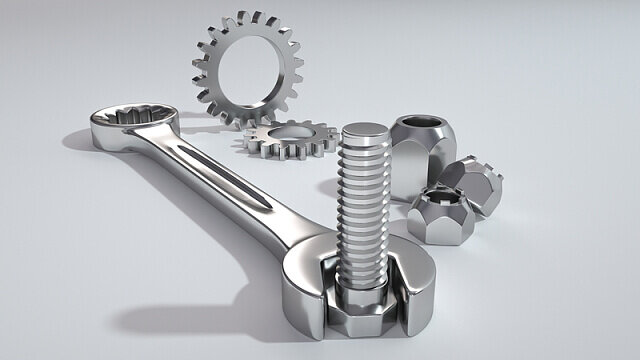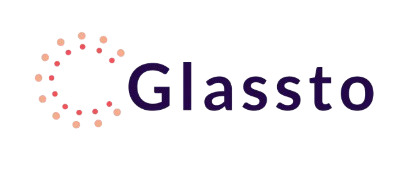The European Union unveiled its ambitious Defense Industry Strategy for the first time, aiming to enhance its strategic autonomy. This move not only has significant implications for Europe but also for other regions, particularly the Asia-Pacific. Background of the Strategy According to international analysts, the EU Defense Industry Strategy (EDIS) aims to transform the defense industry into a wartime state by promoting investment, R&D, production, procurement, and ownership of defense equipment through collaboration among defense contractors within the EU. This is part of the EU’s effort to transition from an emergency response to the Russia-Ukraine conflict to a long-term enhancement of defense industry readiness. As early as March 2022, shortly after the outbreak of the Russia-Ukraine conflict, the EU adopted the ambitious “Strategic Compass” plan, aiming to establish independent military and defense capabilities. The plan requires EU member states to increase defense budgets, strengthen R&D and procurement of advanced military equipment, particularly in command, control, communication systems, drones, next-generation tanks, and integrated air defense missile systems. The idea of defense autonomy in the EU had already emerged before the Russia-Ukraine conflict, partly due to the strained relationship between the EU and the US during the Trump presidency. Although the relationship improved under President Biden, the US’s withdrawal from Afghanistan without consulting European allies and the establishment of the AUKUS trilateral security partnership with Australia and the UK (which had left the EU) further pushed the EU to reduce its over-reliance on the US “security umbrella.” Therefore, the EDIS can be seen as a significant step for the EU in the field of defense security, aiming to implement the “Strategic Compass” and advance the EU’s “strategic autonomy” goal. Ambitious Goals International observers point out that only 18% of European defense procurement funds flowed to domestic defense companies between 2021 and 2022. Due to insufficient reserves, about 75% of newly purchased military equipment came from producers outside Europe, with 68% from the US arms industry. The EDIS aims to reduce dependence on the US while addressing the “security threat from Russia.” The strategy stipulates that by 2030, at least 50% of procurement budgets (60% by 2035) should be directed to EU-based suppliers, and at least 40% of defense equipment should be procured through cooperation. The EDIS proposes five main measures to enhance the EU’s defense industry capabilities: (1) increasing and more effectively using defense investments; (2) improving the responsiveness and resilience of the defense supply chain; (3) strengthening financial support for the defense industry; (4) adapting to realistic trends in warfare; (5) advancing partnerships with foreign countries. All these measures aim to encourage member state governments to strengthen cooperation and prevent them from purchasing weapons from countries outside the EU. EU foreign policy chief Josep Borrell stated: “After decades of low spending, we must invest more in the defense sector. We need to cooperate better to form a strong, competitive European defense industry.” Former head of the EU Military Staff, Jean-Paul Pelosse, also noted: “Defense autonomy is a prerequisite for strategic autonomy. If Europe’s weapon systems, even the smallest components, depend on external supplies, achieving strategic autonomy will be a huge challenge.” To prepare for potential wars, the EU focuses on promoting joint procurement and replenishing European reserves, with a particular emphasis on the European Defense Industrial Reinforcement Act (EDIRPA) and the Ammunition Production Assistance Act to strengthen support for Ukraine. Overall, the EDIS outlines an ambitious path to promote greater integration and cooperation in defense procurement and policy. It reflects the EU’s motivation to turn the European defense crisis into an opportunity to strengthen collective security. Uncertain Prospects for Success The success of the strategy depends on resources and political determination. The EU’s defense budget is undoubtedly sufficient: in 2022, the EU’s military spending was $240 billion, far below the US ($794 billion) but more than twice that of Russia ($92 billion) and almost on par with China ($273 billion). The Russia-Ukraine conflict directly led to the EU’s record-high defense spending of $295 billion in 2023. In just two years, the number of NATO member states allocating 2% of their GDP to defense budgets increased from 9 to 23. In the first 16 months after the start of the Russia-Ukraine conflict, EU member states invested over 100 billion euros in defense, but nearly 80% of the contracts were still awarded to companies outside the EU, with the US accounting for more than 60%. However, many EU countries remain hesitant about allowing the EU to intervene in their defense and security policies. Policy differences among member states, issues of national sovereignty, and the divergence in handling the Russia-Ukraine conflict between Western and Eastern Europe will pose challenges to the effective implementation of the EDIS. In particular, Germany’s decision to purchase US F-35 fighter jets instead of European-made models highlights the difficulty in implementing the “strategic autonomy” slogan. Impact on the Asia-Pacific Region As a significant force in a multipolar world order, the EU’s defense industry strategy not only affects Europe but also ripples through other regions. First, with the possibility of Trump’s return to power, the demand for strategic autonomy among the EU and US allies in Asia will rise, driving defense industry cooperation between the EU and Asia-Pacific defense powers like Japan and South Korea. Japanese Prime Minister Fumio Kishida has warned: “Today’s Ukraine could be tomorrow’s East Asia.” Since 2019, the EU has openly stated that China is both a partner and a systemic rival. Consensus on concerns about China could drive the EU and Japan to strengthen defense industry cooperation. Against the backdrop of significant changes in the security environment in Europe and Asia, the EU hopes to strengthen defense cooperation with Japan and South Korea. During Russian President’s visit to North Korea, Russia and North Korea announced the elevation of their relationship to a comprehensive strategic partnership, making it more likely for the EU to further strengthen defense cooperation with Japan and South Korea. In fact, South Korea’s rise in the global arms market, particularly in arms exports to Europe, has been notable. Since the outbreak of the Russia-Ukraine conflict, Poland has heavily ordered South Korea’s K2 tanks and K9 self-propelled howitzers, while Romania, Finland, and Estonia are also increasing their arms imports from South Korea. Meanwhile, the EU is also considering promoting cooperation with South Korea in other areas, such as space, cybersecurity, and maritime security, as well as with Japan on nuclear disarmament and non-proliferation. The leaders of Japan and South Korea have attended NATO summits for three consecutive years, indicating that future defense cooperation between the EU and these two countries will further strengthen, especially if Trump wins the US presidential election in November 2024. Another impact of the EDIS on the Asia-Pacific region is the further stimulation of military expansion, particularly in investments in naval and air weapons. In recent years, the Russia-Ukraine conflict and tensions in the East China Sea and the Taiwan Strait have driven increases in global and regional defense spending. According to the Stockholm International Peace Research Institute (SIPRI), global defense budgets reached a record $2.4 trillion in 2023. Countries in the Asia-Pacific region, especially Southeast Asian nations, will have more options for weapons supplies beyond Russia and the US. Although this change may take several years, the trend is irreversible. Experts believe that in the long term, as the EU becomes more deeply involved in Asia-Pacific affairs and advances the EDIS, the region’s multipolar structure will become clearer, moving away from the current “two superpowers, multiple strong states” situation. The EU is actively seeking ASEAN’s support and pushing to upgrade bilateral relations to comprehensive strategic partnerships. If ASEAN and the EU further strengthen defense cooperation, it is not impossible that ASEAN will allow the EU to formally participate in its mechanisms as a full dialogue partner. This development could increase the complexity of the region’s multi-layered power structure while also helping to maintain the strategic balance in the Asia-Pacific region. (End)






